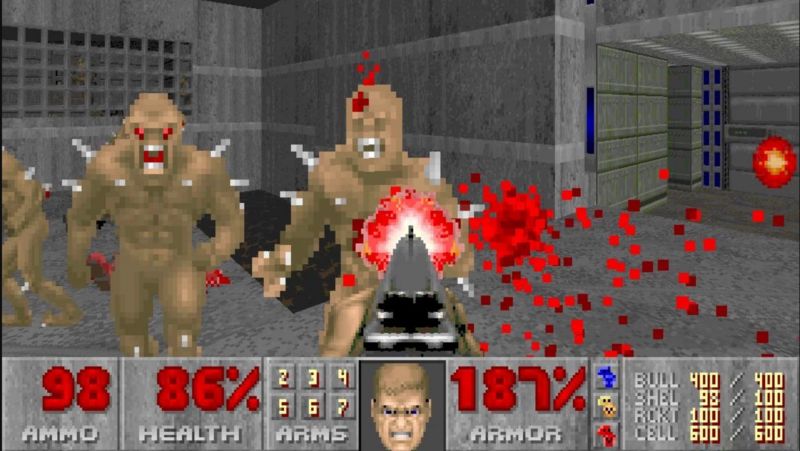The original Doom, one of 64 Objects that shaped video game history

Enlarge / Cutting edge at the time, we swear.
Doom (1993): Doom's success lay not only with its addicting gameplay and technical innovations, such as its introduction of a portable game engine, but also in its innovative digital distribution. Note the prominent "shareware" advertisement on the top front of the game packaging. This groundbreaking game earned a spot in the inaugural class of the World Video Game Hall of Fame.
In the early 1990s, the video game industry was still dominated by that Italian-American plumber named Mario. The gaming giant Nintendo was not just restricting the number of third-party titles that could be released for its NES and SNES consoles, but it was also enforcing a strict moral code for its games. The SNES port of the wildly popular (and gratuitously violent) arcade game Mortal Kombat, for instance, replaced blood with sweat and substituted the game's notorious fatalities with decidedly less violent "finishing moves." Many game designers felt suffocated by Nintendo's sanitized ecosystem and began returning to the wild west of video game development, the personal computer, to create exciting new games that challenged graphical and moral boundaries. Then, in 1993, a space marine blasted his way through hordes of invading demons, blazing a new path for games in the process. id Software's Doom was a seminal release in video game history, influencing the form, feel, and perception of so many first-person shooters that followed.
Doom's story begins with id Software, and id Software's story begins with a company called Softdisk. Softdisk created disk magazines, which were electronic publications distributed on 5.25" floppy disks that provided readers with an interactive experience using graphics, games, music, and puzzles. In the late 1980s, computer programmer John Romero was working at Softdisk, creating games that would be included alongside magazine articles. One such game was Dangerous Dave (1988), which Romero created to accompany an article about the GraBASIC programming language. Dangerous Dave was a simple game heavily inspired by Super Mario Bros. in which players collected gold cups and defeated monsters.
Read 10 remaining paragraphs | Comments